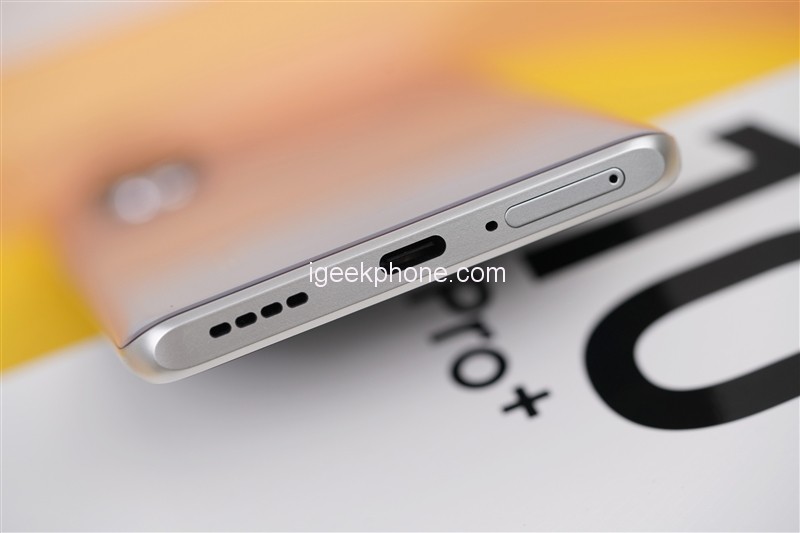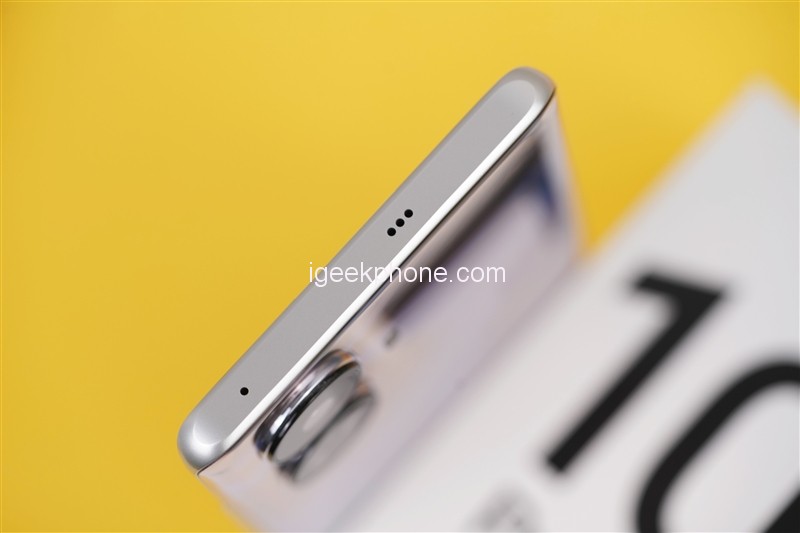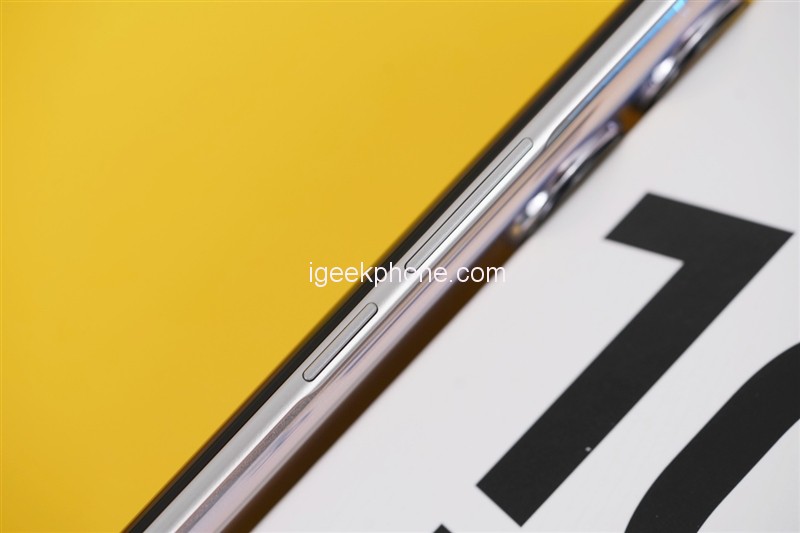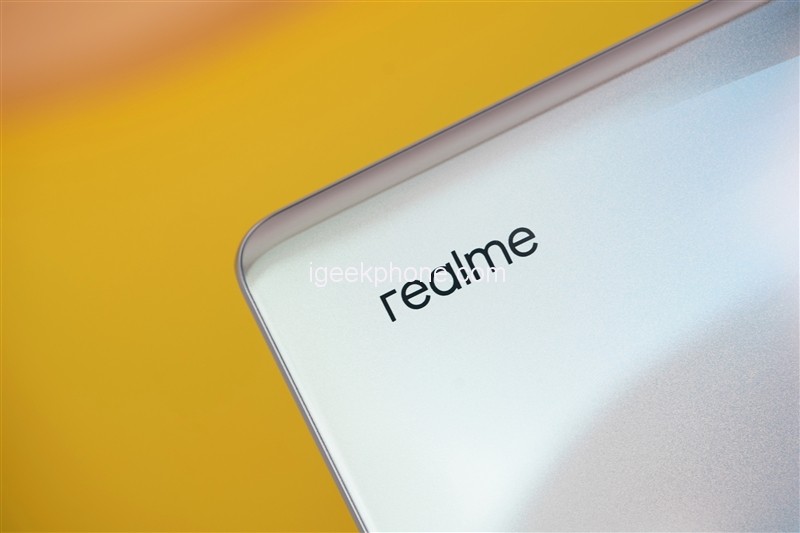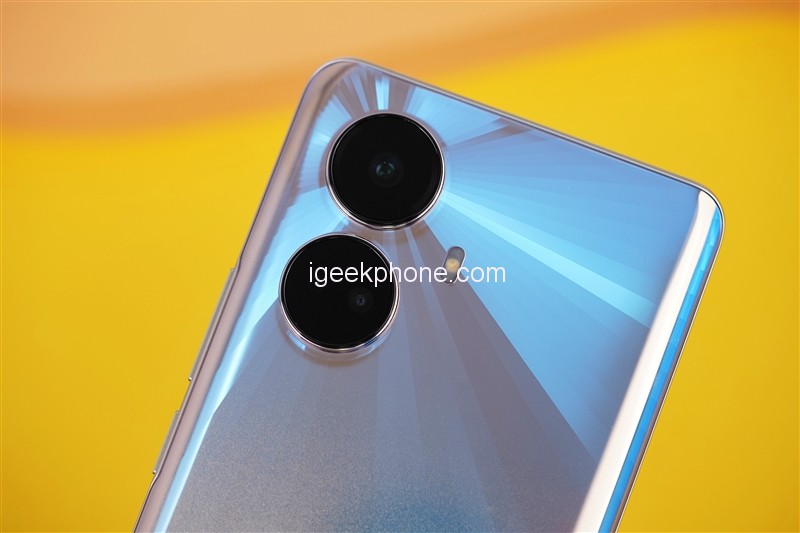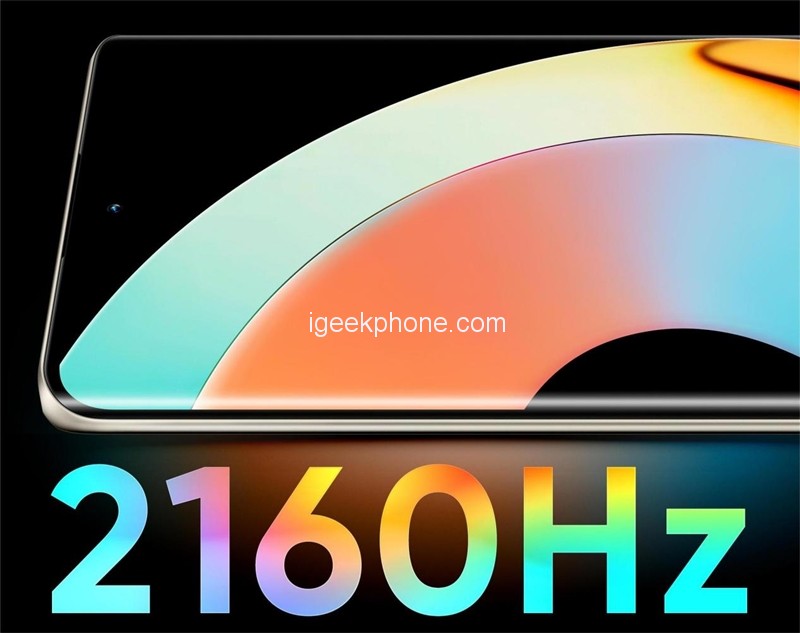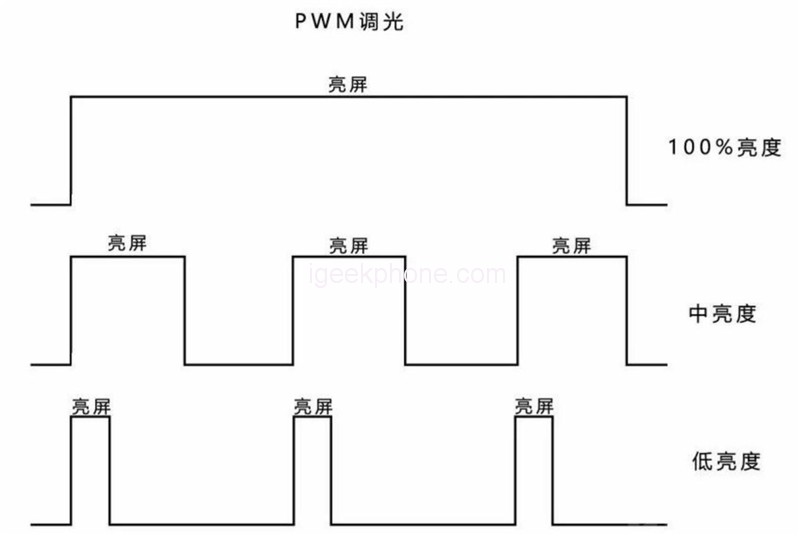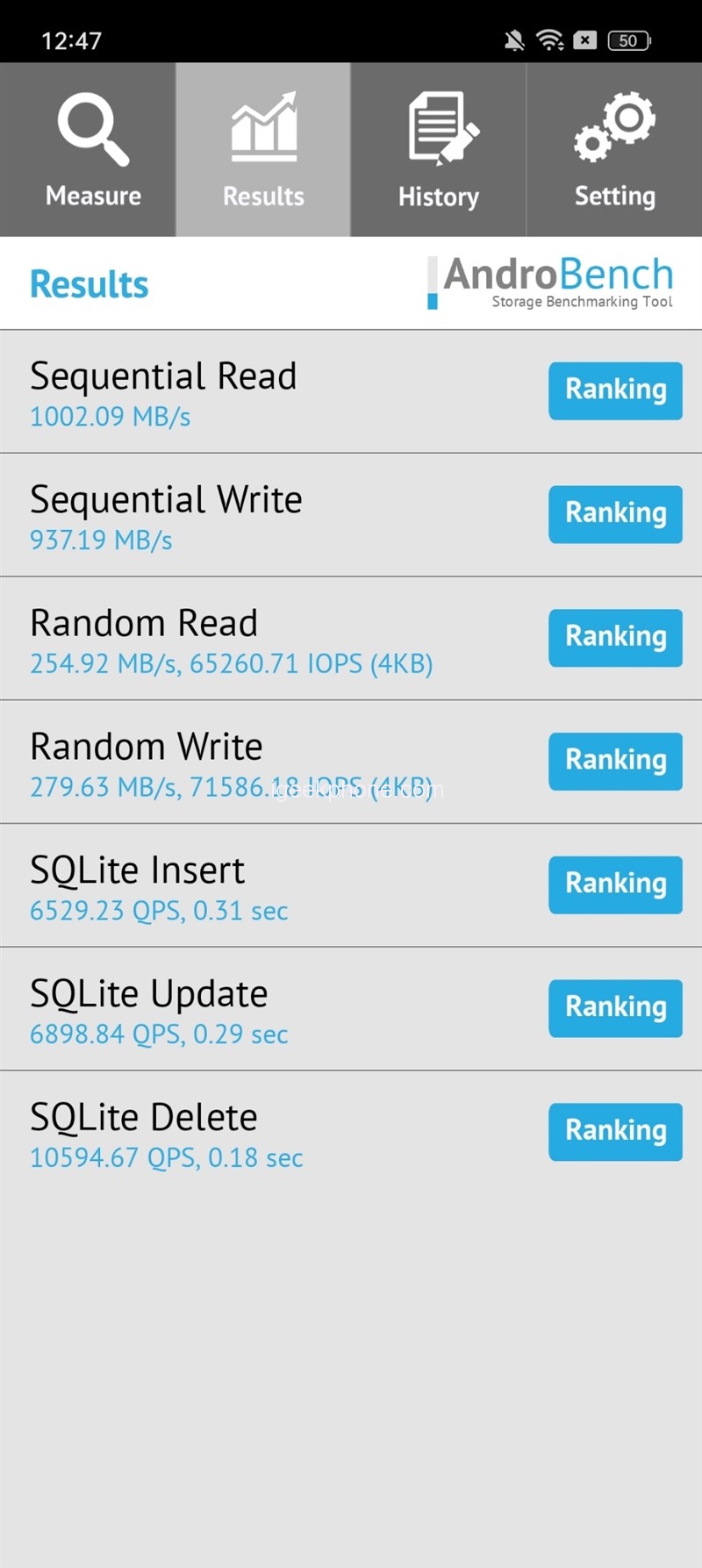This year, realme again brought back the popular series and officially brought the digital series back to the Chinese market. Each generation of digital series has brought a “technological leapfrog” beyond expectations to young people worldwide. Therefore, Realme named it the Realme 10 series to commemorate this great product. This number not only represents the completeness and beginning but also the first sincere work of Realme to enter the second stage of entrepreneurship. 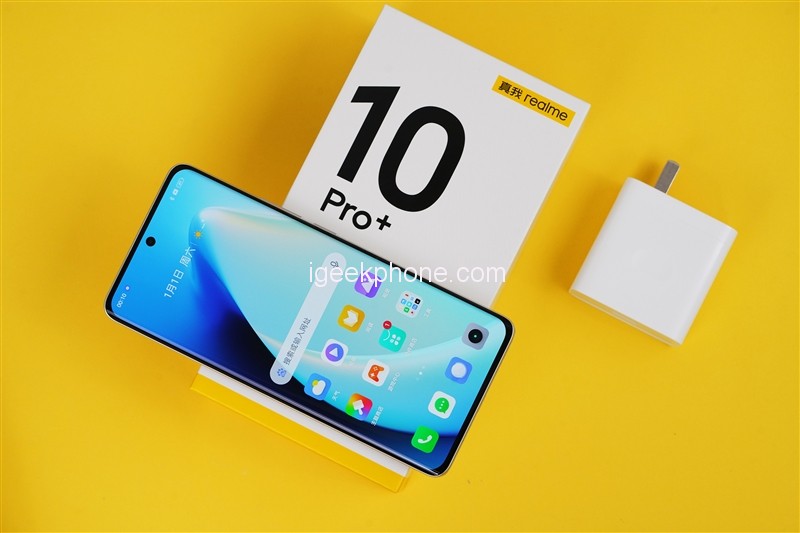
Today we are going to review Realme 10 Pro+, Among mid-range phones, Realme 10 Pro+ has up to 12GB of memory and 256GB of storage, but the specification is likely to be a combination of LPDDR4X+UFS2.2, and we will do related tests to verify it later.
The following is the detailed review of Realme 10 Pro+
Design
Realme 10 Pro+ uses a 6.7-inch hyperboloid OLED screen with a resolution of 2412 x 1080, supports up to 120Hz refresh rate and 1260Hz instantaneous touch sampling rate, and supports high-frequency PWM dimming up to 2160Hz. It is the first mobile phone that supports such high-standard PWM dimming, and it is also the industry’s first OLED screen mobile phone that has obtained TÜV Rheinland’s flicker-free eye protection certification.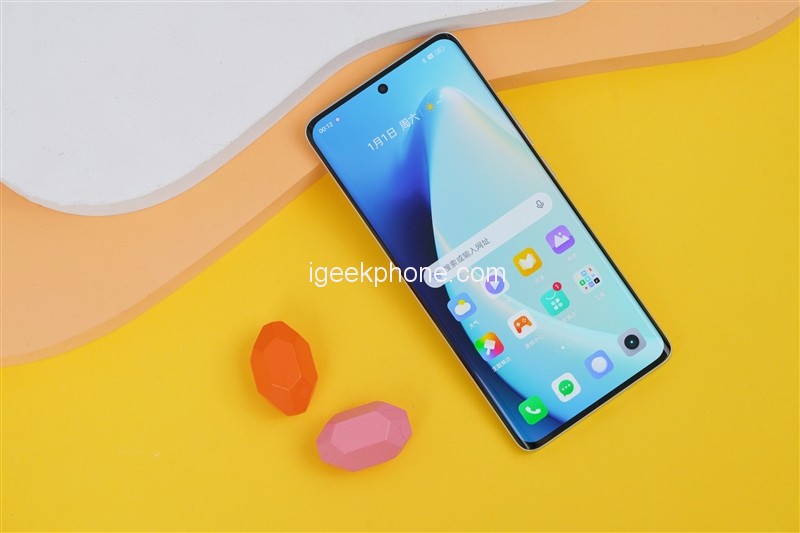
The front camera of Realme 10 Pro+ adopts a centered perforated design. The 16-megapixel camera has enough resolution when taking selfies. The most important thing is the centered camera position, so there will be no misalignment when taking selfies or video chats.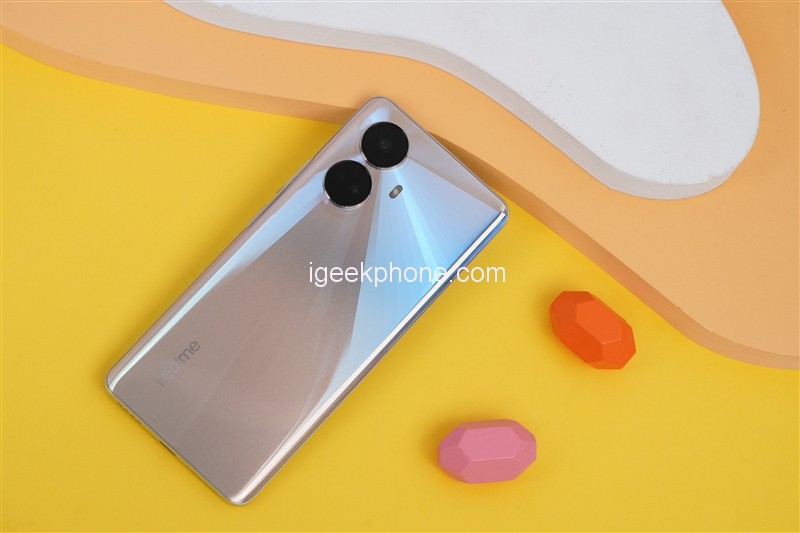
Realme 10 Pro+ adopts the COP Ultra packaging process at the bottom of the phone, achieving an extremely narrow chin of 2.33mm, surpassing its flagship mobile phone, Realme GT2 Pro.
The back of the phone is supplemented by a star design, the first prism light cone texture, and stardust particles, and the overall use of ultra-thick coating technology makes the color of the rear case more layered and three-dimensional.
On the top of the back of the phone, the formed prism pattern UV texture is superimposed inside the coating to increase the color brightness and saturation; the display effect is more real and natural, and the texture is better—the combination of the two forms the effect of light and shadow flow.
The lower part of the phone adopts a new flash sand process + ultra-thick coating process—the combination of the two forms stardust particles. Under the refraction and reflection of light, the upper and lower parts form entirely different textures.
Realme 10 Pro+ rear three-camera module, of which the main camera is 108 Megapixels, is located on the upper left of the back of the phone and presented separately in a circular ring. The default nine-in-one output is 12 million pixel images.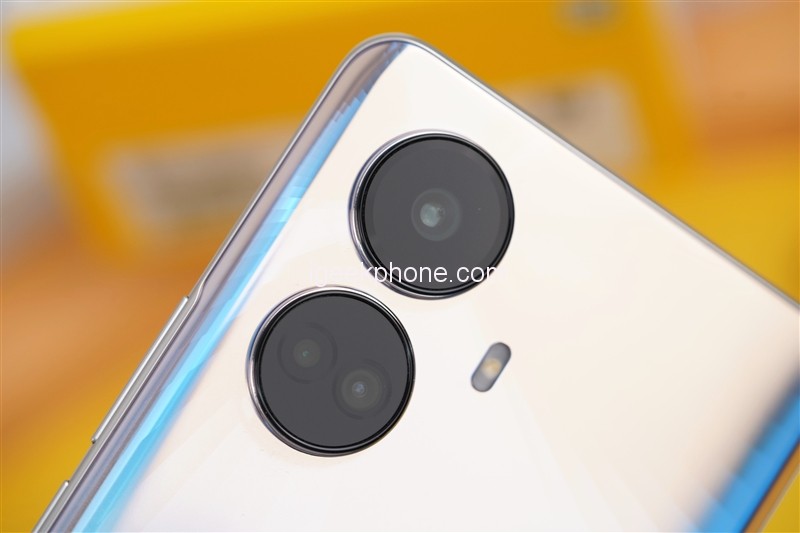
There is another ring module under the main camera, embedded with an 8-megapixel ultra-wide-angle lens and a 2-megapixel macro lens. A single LED fills light is integrated into the middle of the right side of the upper and lower ring modules. The volume and power buttons are on the phone’s right side.
Realme 10 Pro+ brings an ultra-thin body, only 7.78mm, and weighs only 173g. The front and rear hyperboloid design, with a 61° golden curvature, makes the phone extremely comfortable to hold.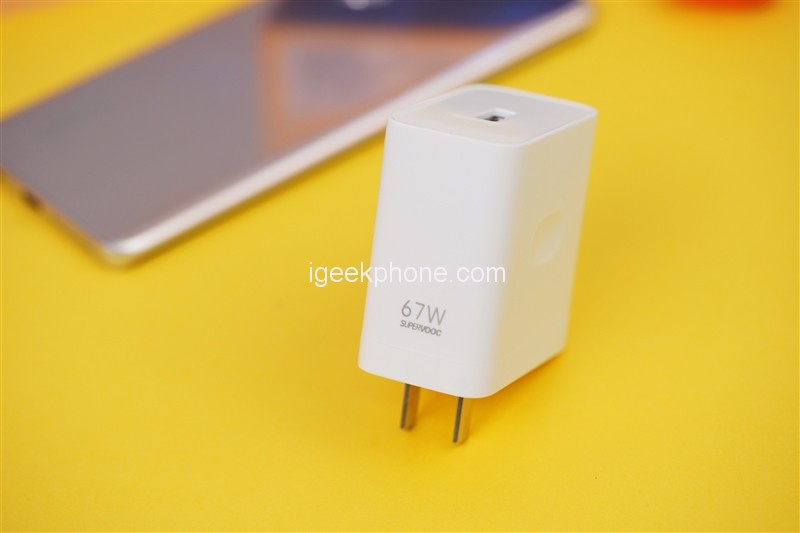
On the top of the phone, there are openings for a microphone and an independent sub-speaker. In this price range, it is also the greatest sincerity to the user to be able to abandon the double speaker of the earpiece and use a higher-cost speaker unit.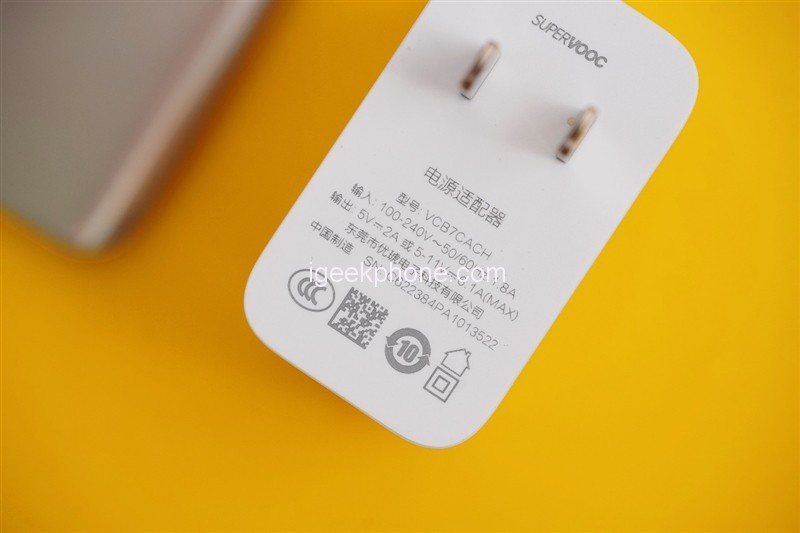
The main speaker is at the bottom of the phone, which forms a symmetrical stereo double speaker with the top, but the specifications are one big and one small. The Type-C charging headset shared interface, microphone, and SIM card slot are on the right side. Realme 10 Pro+ is equipped with a 67W fast charging adapter.
Screen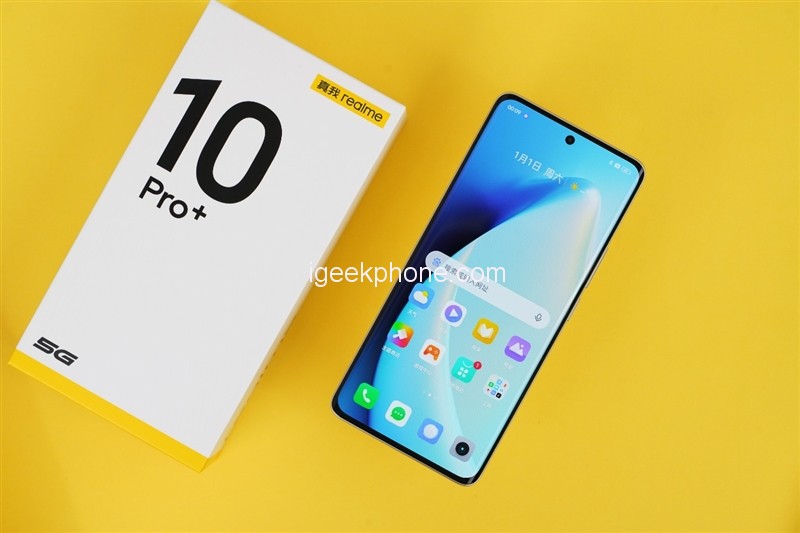
High-frequency dimming is now common in smartphones. If your mobile phone does not support high-frequency PWM dimming, you can consider changing your mobile phone.
IEEE (Institute of Electrical and Electronics Engineers) proposes that low-frequency PWM dimming with a frequency lower than 1250Hz and a fluctuation depth greater than 8% has a higher risk to eye health. Then high-frequency PWM dimming becomes a better solution to flicker.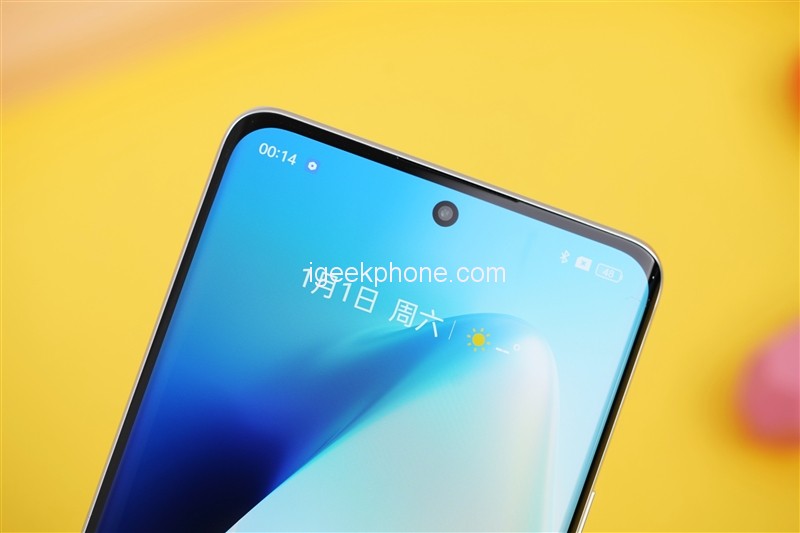
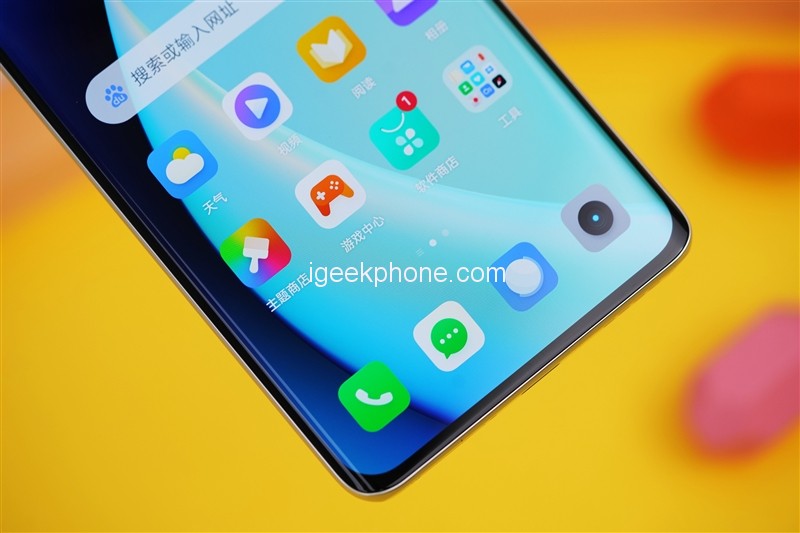
For this reason, Realme 10 Pro+ is the first to introduce high-frequency PWM dimming technology up to 2160Hz in mobile phones. Compared with the conventional 480Hz, the 2160Hz dimming frequency is increased by 4.5 times, preserving the color accuracy in dark light and maintaining the light’s brightness. Solve the problem of the low-brightness splash screen.
Here we want to discuss the difference between DC dimming and PWM dimming. The so-called DC dimming changes the screen’s brightness by increasing or reducing the circuit’s power. Although this method can bring users a certain eye protection effect, under low intelligence, the color displayed on the OLED screen will be uneven, affecting the perception.
Because the characteristics of DC dimming are prone to color cast, many mobile phone products do not provide a DC dimming function but switch to PWM dimming.
The PWM dimming principle differs from DC dimming, which relies on alternating on and off of the screen. When the PWM dimming screen is on, it does not continuously emit light but keeps on and off the screen. When the turn on and off is fast enough, the naked eye will think that the phone is always on.
In turning on and off the screen, the longer the off-screen state lasts, the lower the brightness of the net will be to the naked eye. No matter how fast or slow the flickering frequency is, the screen’s brightness will remain unchanged as long as the on-off time ratio within a flickering cycle is kept constant.
Therefore, the characteristics of PWM dimming are simple structure, no color cast problem, power saving, and low heat generation. Still, there is a fatal shortcoming, a stroboscopic phenomenon, and watching the screen for a long time will cause eye discomfort.
In this regard, to solve the screen flicker problem of PWM dimming, mobile phone manufacturers have increased the dimming frequency, 1440Hz, 1920Hz, and even 2160Hz, which Realme first launched, came from this.
However, Realme 10 Pro+ is simultaneously equipped with high-frequency PWM dimming and DC dimming. At high brightness (above 90nit), the mobile phone adopts DC dimming scheme, while at low luminance (below 90nit), the mobile phone uses high-frequency PWM dimming. For dimming, the PWM dimming frequency is relatively high under low brightness. It can reach 2160Hz, which can not only take into account the texture of the picture but also improve the user experience, achieving the effect of killing two birds with one stone.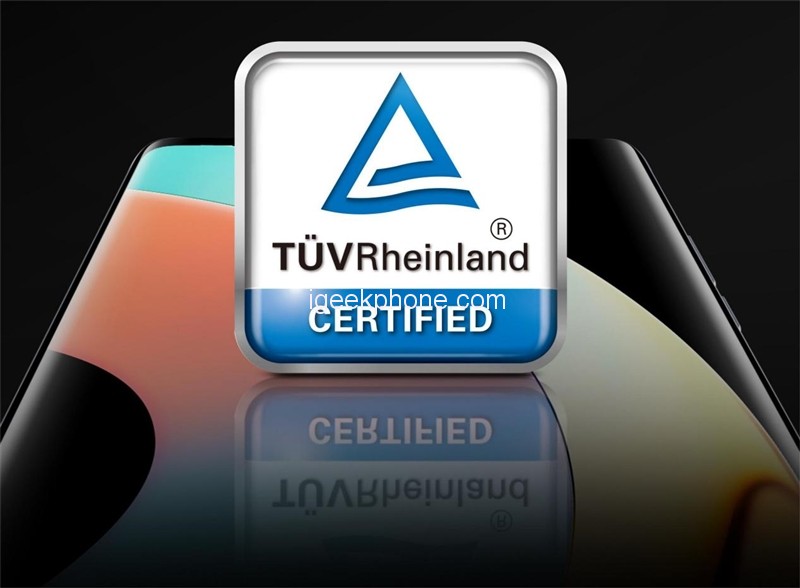
As a result, Realme 10 Pro+ is also the industry’s first OLED screen mobile phone to obtain dual certification of low blue light and flicker-free from TÜV Rheinland.
Performance
Realme 10 Pro+ uses MediaTek’s latest Dimensity 1080 processor, built by TSMC’s 6nm process, using 2×2.6GHz Cortex-A78 large core + 6×2.0GHz Cortex-A55, a total of eight cores, and the GPU is a quad-core core Mali-G68.
1. Antutu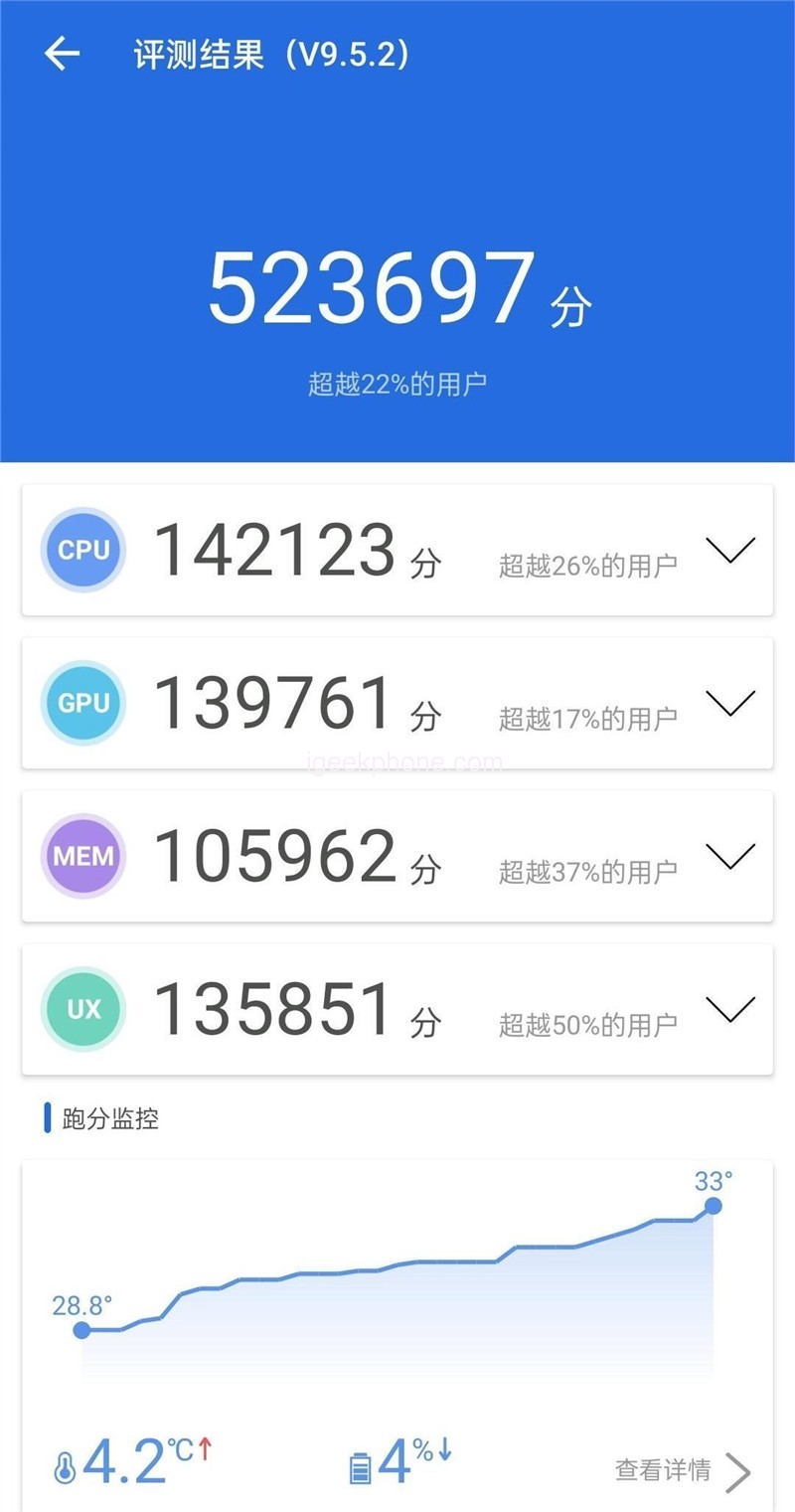
The first is the AnTuTu comprehensive performance test. The total score exceeded 500,000, reaching 523,697 points, of which the CPU score was 142,123 points, the GPU score was 139,761 points, the memory performance score was 105,962 points, and the human-computer interaction score was 135,851 points. Same level.
2. Master Lu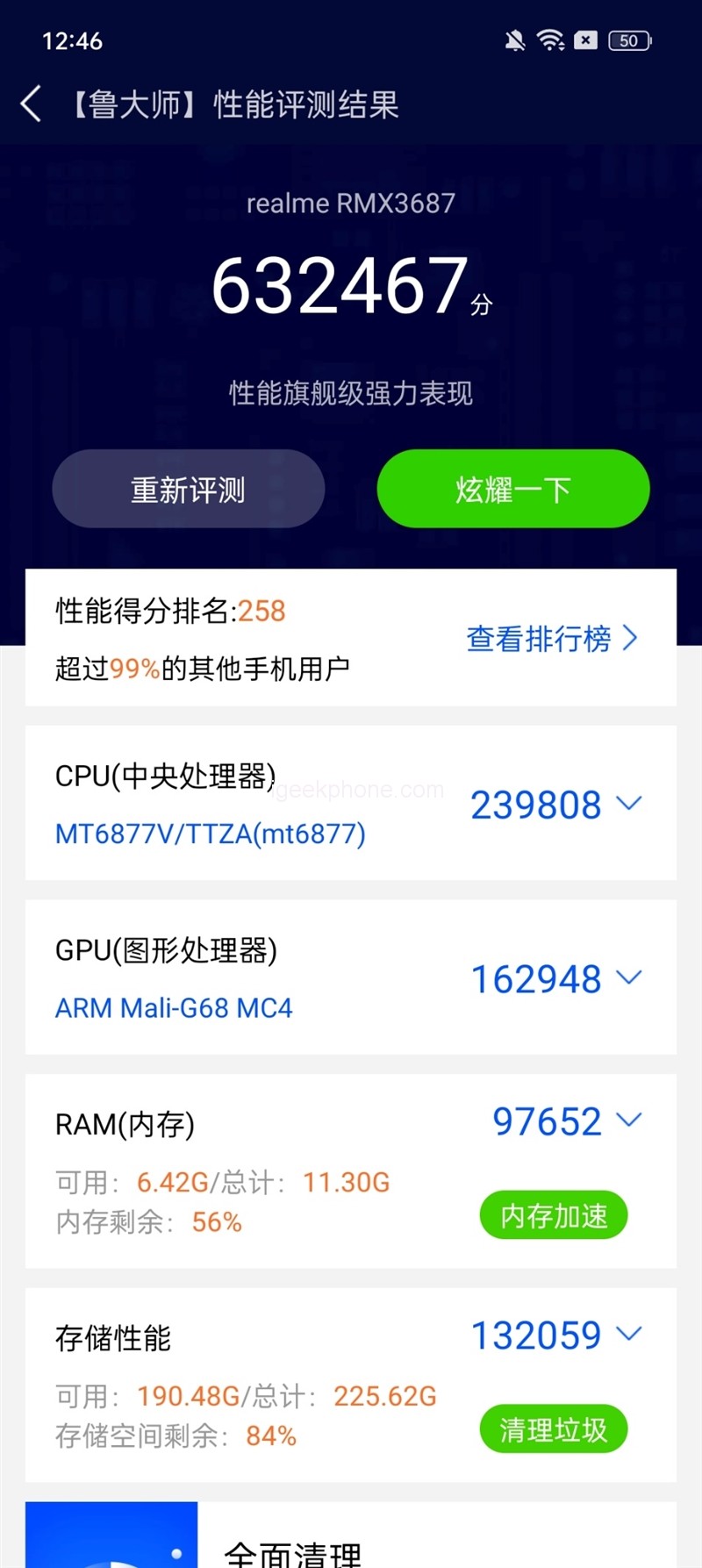
Master Lu’s total test score reached 632,467 points, of which the CPU scored 239,808 points, the GPU ran 162,948 points, the memory score was 97,652 points, and the storage score was 132,059 points, which are at the mainstream level.
3. GeekBench 5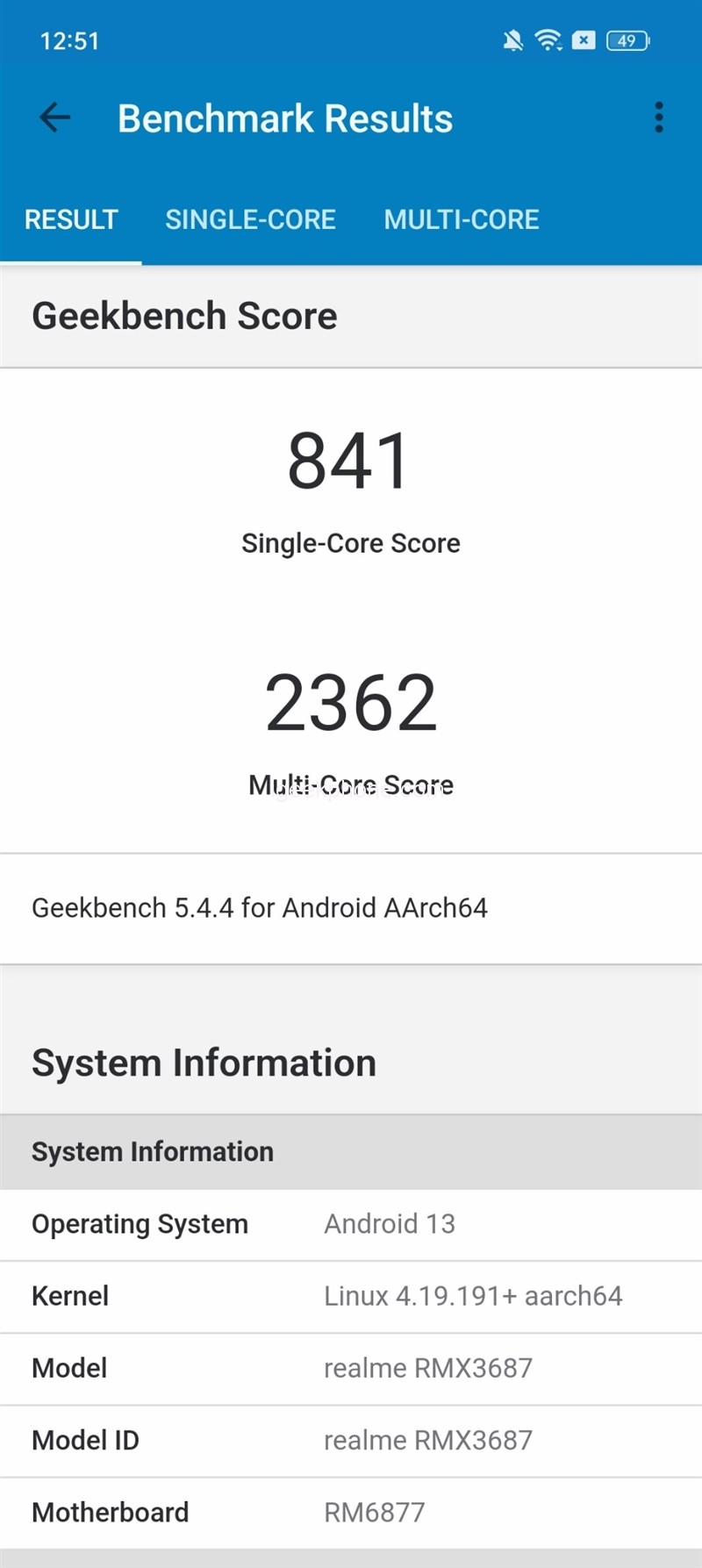
Next is the CPU single test, the GeekBench5 single-core score reached 841 points, and the multi-core score came 2362 points.
4. GFXBench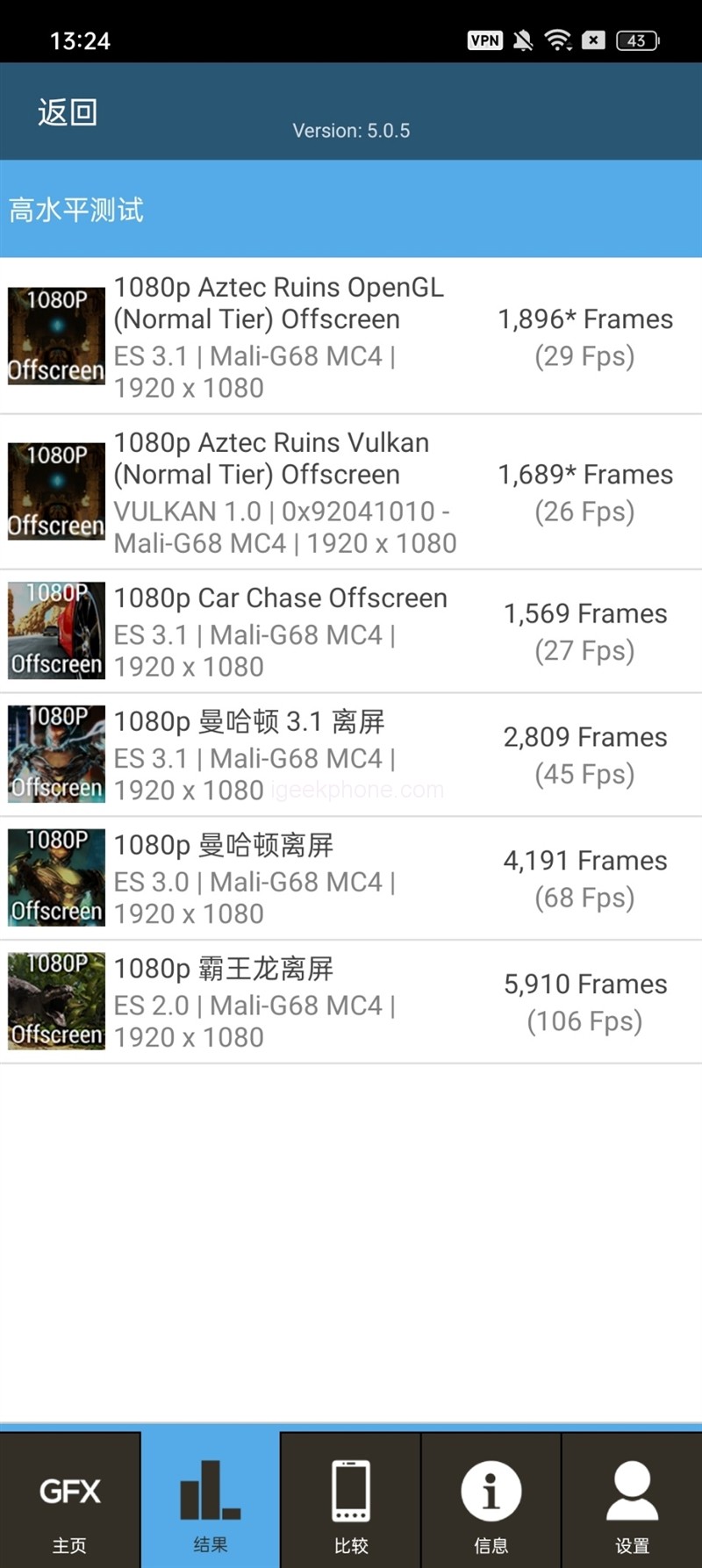
The following is a single GPU test. We use GFXBench to test through the regular six 1080P image quality. Among them, the first three items of Aztec ruins OpenGL, Aztec ruins Vulkan, and racing chase ran at frame rates of 29FPS, 26FPS, and 27FPS, respectively.
After the first three rounds of tests, the temperature of the mobile phone gradually increased, and the test results of the last three items can reflect the performance of the mobile phone in high-rendering 3D games. Manhattan 3.1, Manhattan, and T-Rex ran 45FPS, 68FPS, and 106FPS, respectively. . According to the GPU running score, the capability of Dimensity 1080 is comparable to that of Snapdragon 768G.
5. Adrobench
Finally, we chose AndroBench to test the storage rate of the mobile phone. The sequential reading speed of Realme 10 Pro+ reached 1002.09MB/s, the sequential writing speed was 937.19MB/s, the random reading speed was 254.92MB/s, and the random writing speed was 1002.09MB/s. It is 279.63 MB/s, which meets the rate of UFS2.2 flash memory.
Games
In the game testing session, we tested the frame rate and temperature of the three popular mobile games, “Honor of Kings,” “Peace Elite,” and “Call of Duty,” in an office environment with a room temperature of 24 degrees Celsius.
1. Glory of Kings
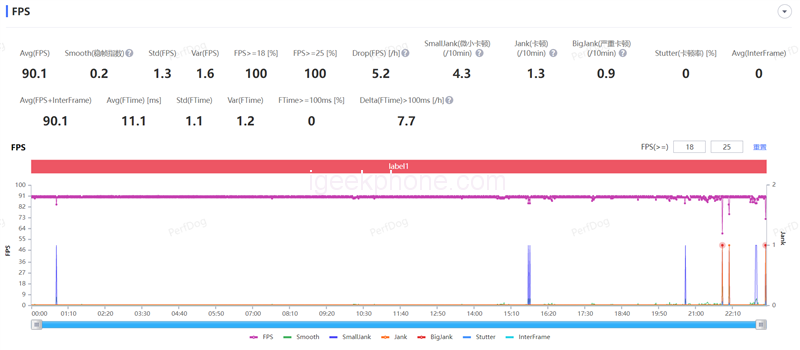
The first is the mobile game “Glory of the King.” With ultra-high image quality and ultra-high frame rate enabled, the game runs at a maximum of 90FPS. After more than 20 minutes of game testing, the frame rate is as stable as a straight line, and the average frame rate remains at 90.1FPS.
For the first time to adopt the Dimensity 1080 chip, Realme 10 Pro+’s tuning for its performance release is quite good, enough to cope with such lower-load games.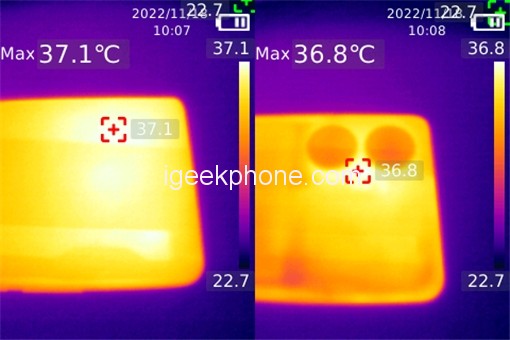
In terms of temperature, after playing the game for nearly 20 minutes, the highest temperature of the phone is 37.1 degrees Celsius on the front and 36.8 degrees Celsius on the back.
2. Peace Elite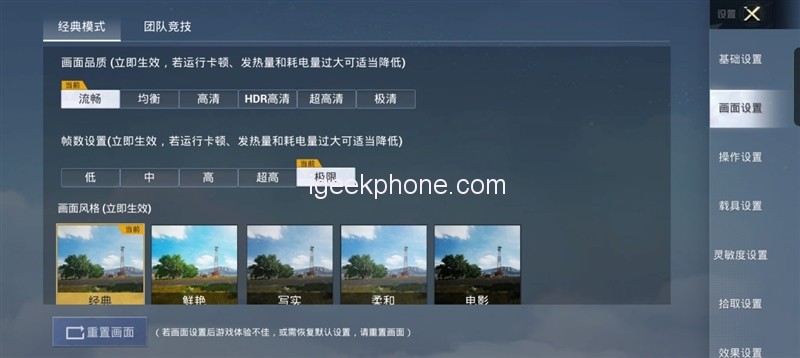
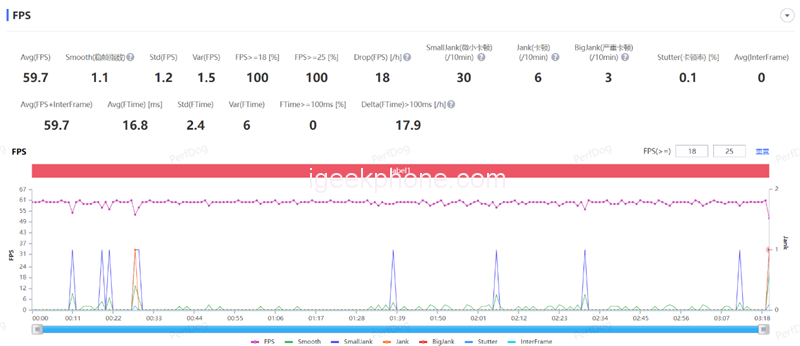
Next is the “Peace Elite” mobile game. We turned on the smooth image quality + extreme frame rate for testing. The game runs at a maximum of 60FPS. After nearly 20 minutes of testing, the game runs smoothly during the period, and there is almost no significant difference. Frame drop phenomenon, the final average frame rate maintained at 59.8FPS.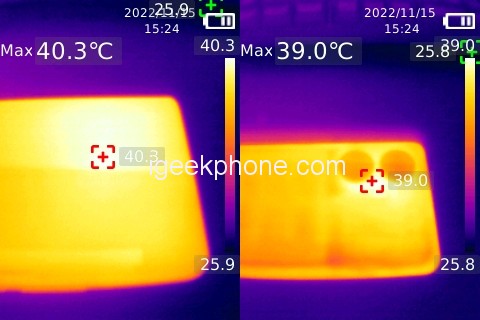
The highest temperature on the front of the game body was 40.3 degrees Celsius in 20 minutes, and the highest temperature on the back was 39 degrees Celsius.
3. Call of Duty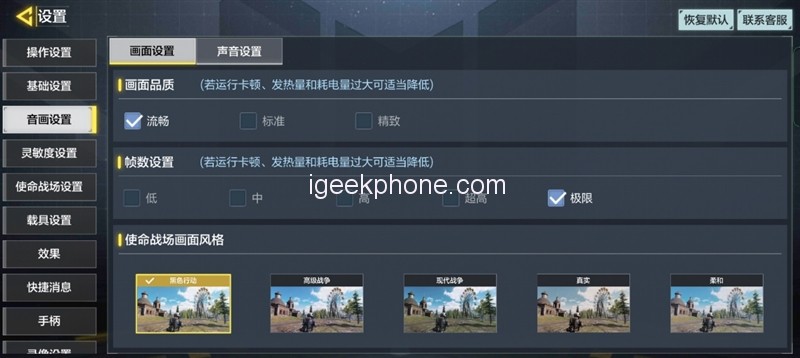

The last is the “Call of Duty” mobile game. Due to frame drops outside the game, we monitored the frame rate of a single game. The frame rate of a team battle was very stable for about 3 minutes, and the average frame rate was maintained at 59.7FPS.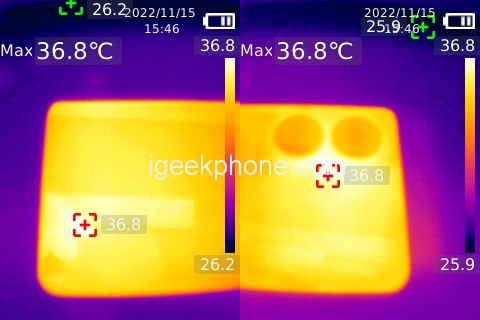
In terms of temperature, after nearly 15 minutes of game testing in 4 rounds of team battle games, the highest temperature on the front of the phone was 36.8 degrees Celsius, and the highest temperature on the back of the phone was 36.58 degrees Celsius, and the overall heat generation was low.
Cameras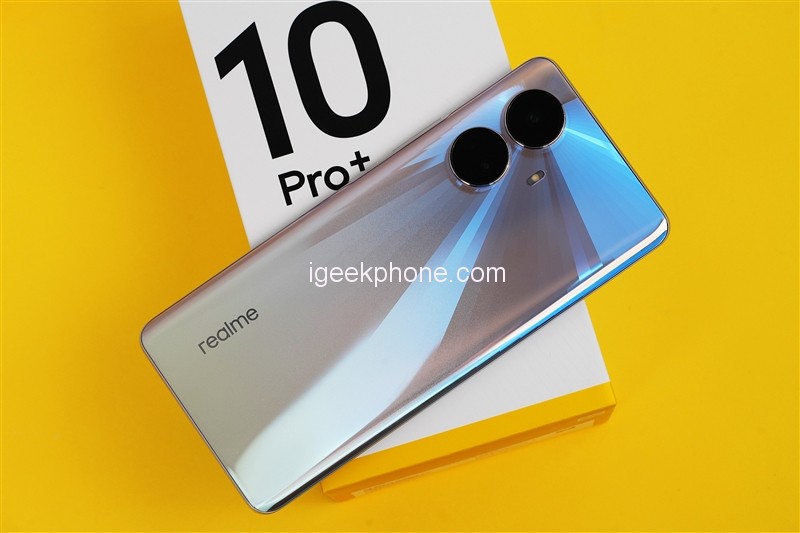
The rear camera of Realme 10 Pro+ uses a three-camera module. The main camera uses a 108MP Samsung HM6 sensor. Due to the 0.64μm pixel size Nonapixel arrangement, the photosensitive unit is reduced to 1/1.67 inches, f/1.75 Aperture, 6P lens, maximum support output 12000×9000 resolution.
Using the 3X Ultra Zoom technology developed by Realme, it can achieve optical quality 3X zoom effect through a full sampling of the sensor, supplemented by algorithm optimization of multi-frame synthesis.
The ultra-wide-angle uses an 8-megapixel lens, and there is an independent 2-megapixel macro lens to shoot close-up objects at a distance of 4cm.
Main camera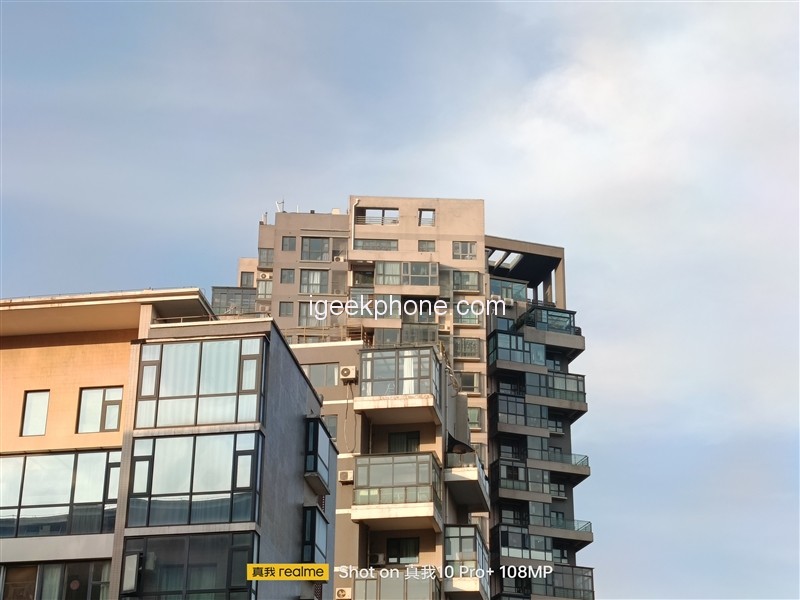
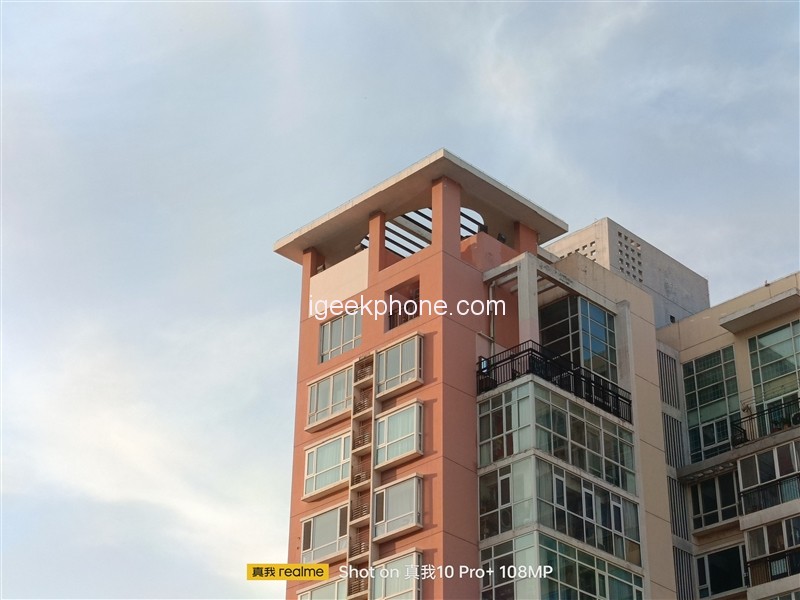
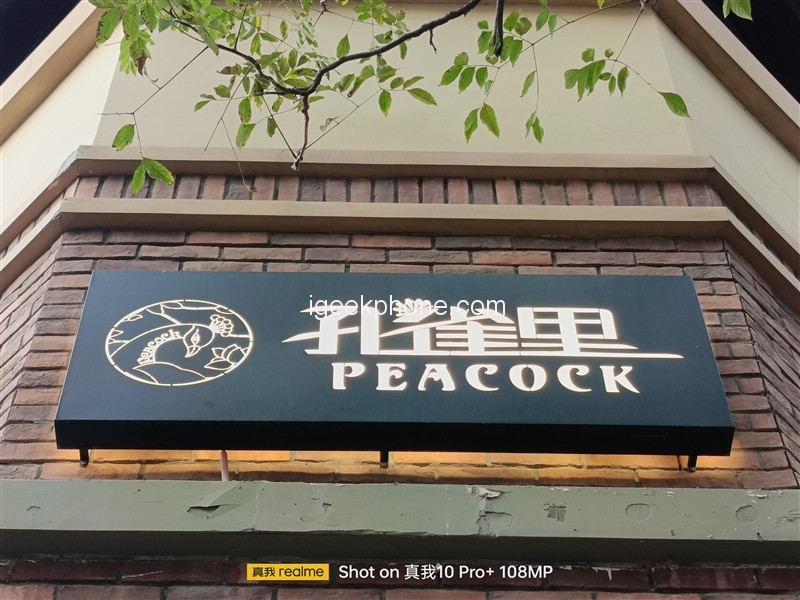
The above is proof taken by the main camera of Realme 10 Pro+ in the daytime scene. It can be seen from the picture that Realme 10 Pro+ restores the color more accurately. The image is very pure and has found a good balance between reality and vividness.
Default 12MP sample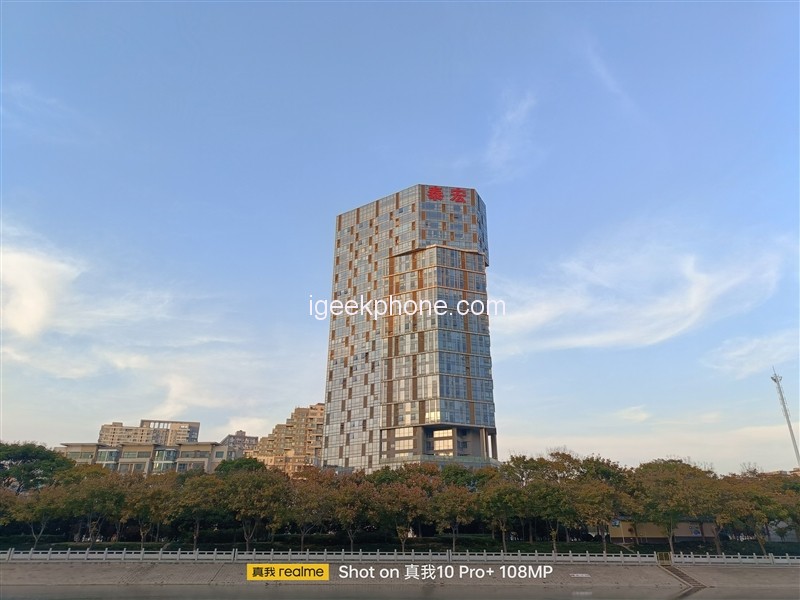
What we need to pay attention to is that Realme 10 Pro+ uses a 108MP main camera, but by default, it can only output a nine-in-one 12-megapixel image, and a single pixel of 0.64μm can bring a higher dynamic range. To output a 108-megapixel picture, you need to turn on the “108M” mode in the camera interface to be able to output.
108MP sample
In our experience, Realme 10 Pro+ benefits from the flagship HyperShot image architecture. You can get a 108MP photo when you press the shutter without waiting and achieve millisecond-level output in seconds.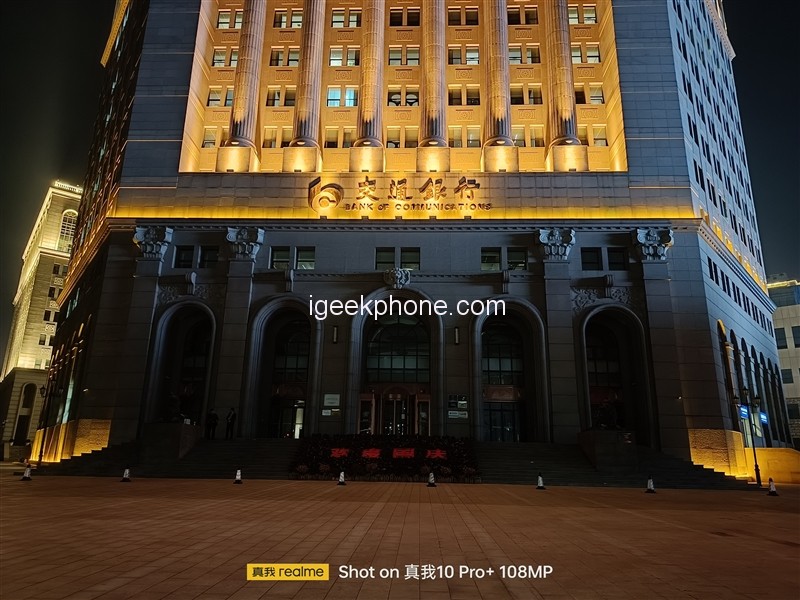
However, the advantages brought by high pixels are also obvious. After enlarging the screen several times, you can still see the text on the top of the building clearly, and even the gaps between the strokes can be seen. The text on the river bank in the lower right corner can also be displayed.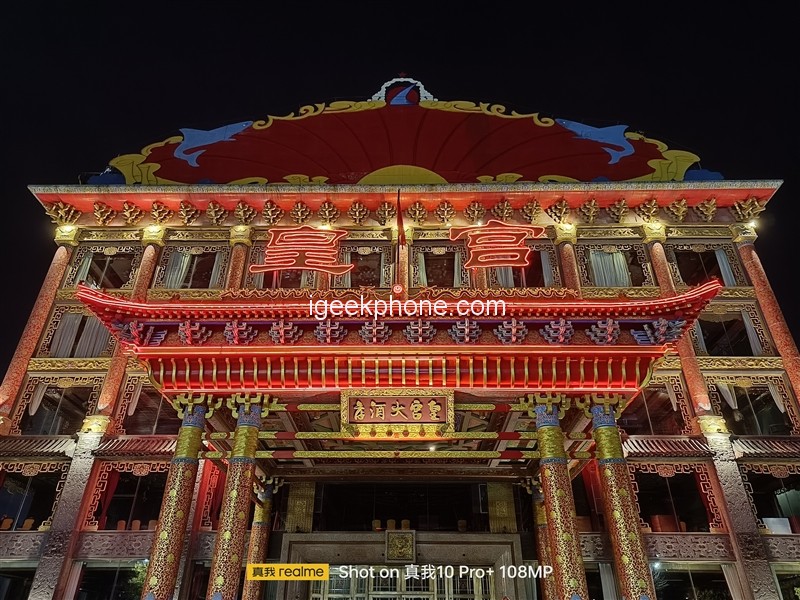
When it comes to night scene mode, high exposure can take a purer picture. In a scene with many lights, the light control of the light sign is relatively in place. From the perception perspective, it is easy for Realme 10 Pro+ to shoot colorful night scenes.
Ultra Wide Angle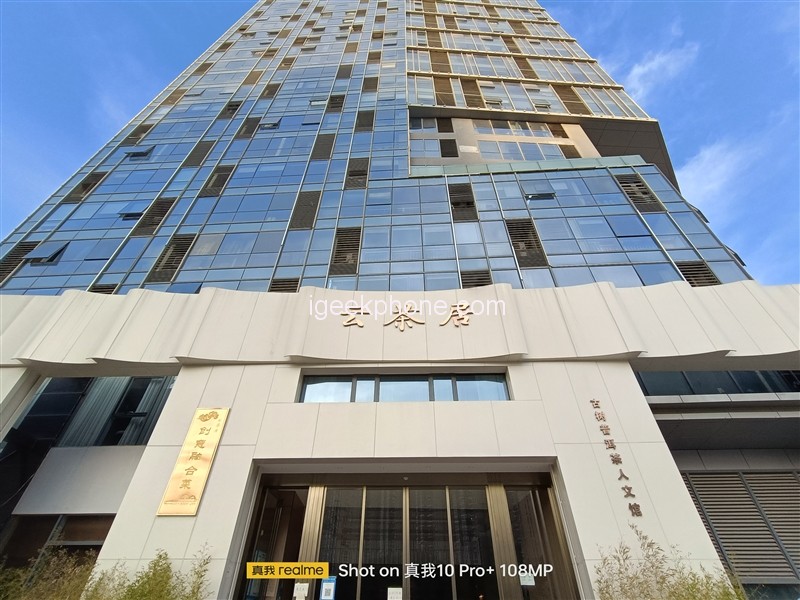
Under the ultra-wide-angle lens, the color and saturation are still accurate, and the distortion on both sides of the image is almost eliminated. When the edge of the photo is zoomed in, the picture is not distorted, and the idea is still perfect.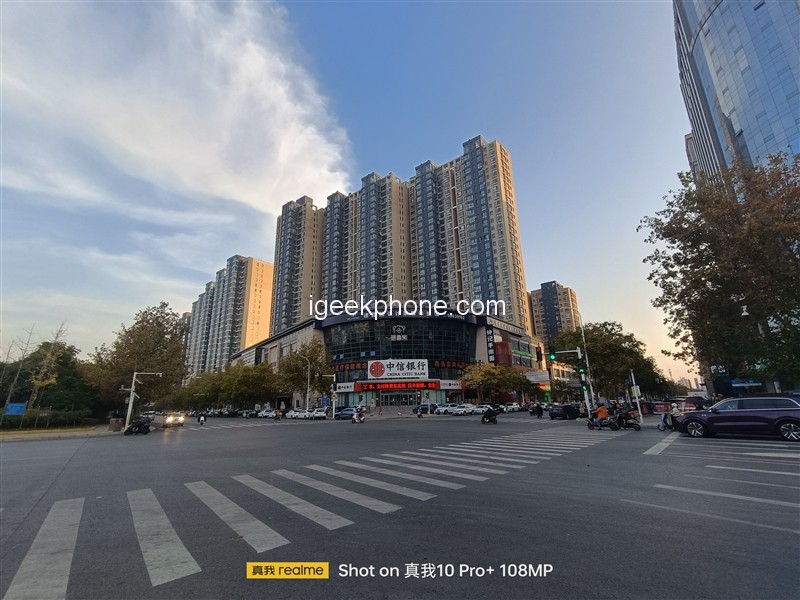
In addition, the ultra-wide-angle lens can not only shoot wider scenes but also show the green lawn very well and shoot images full of texture. The ultra-wide-angle lens also supports the night scene mode, sufficient to highlight the picture’s magnificence when dealing with scenes such as buildings with a wide field of vision.
Macro
Realme 10 Pro+ also has a 2-megapixel macro lens. Although the pixels are not high, it is sufficient for shooting close-up objects, and there is no accidental injury in the blurred part of the edge of the sample.
Battery
Charging test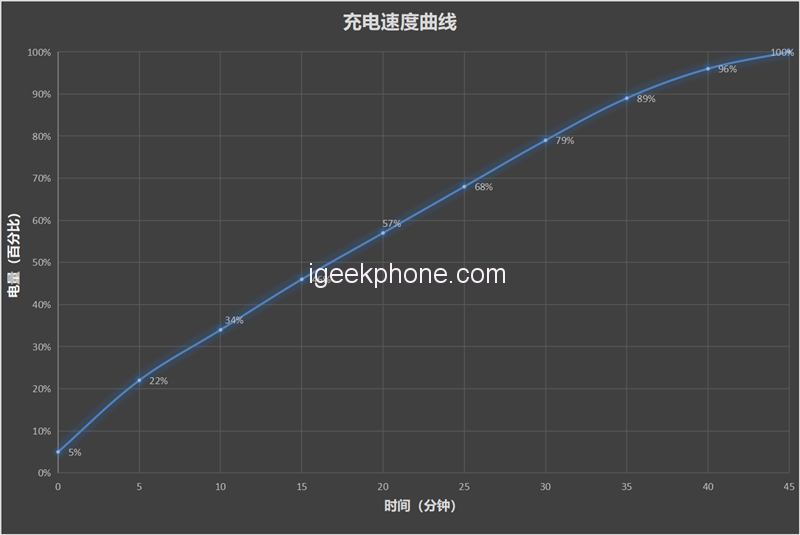
After actual testing, the test was started when the power of the mobile phone was 5%, charged to 22% in 5 minutes, 34% in 10 minutes, 57% in 20 minutes, 79% in half an hour, and when the power reached 90%. With the battery protection strategy turned on, although the charging capacity and speed have dropped significantly, it only takes 45 minutes to charge the battery fully.
Endurance test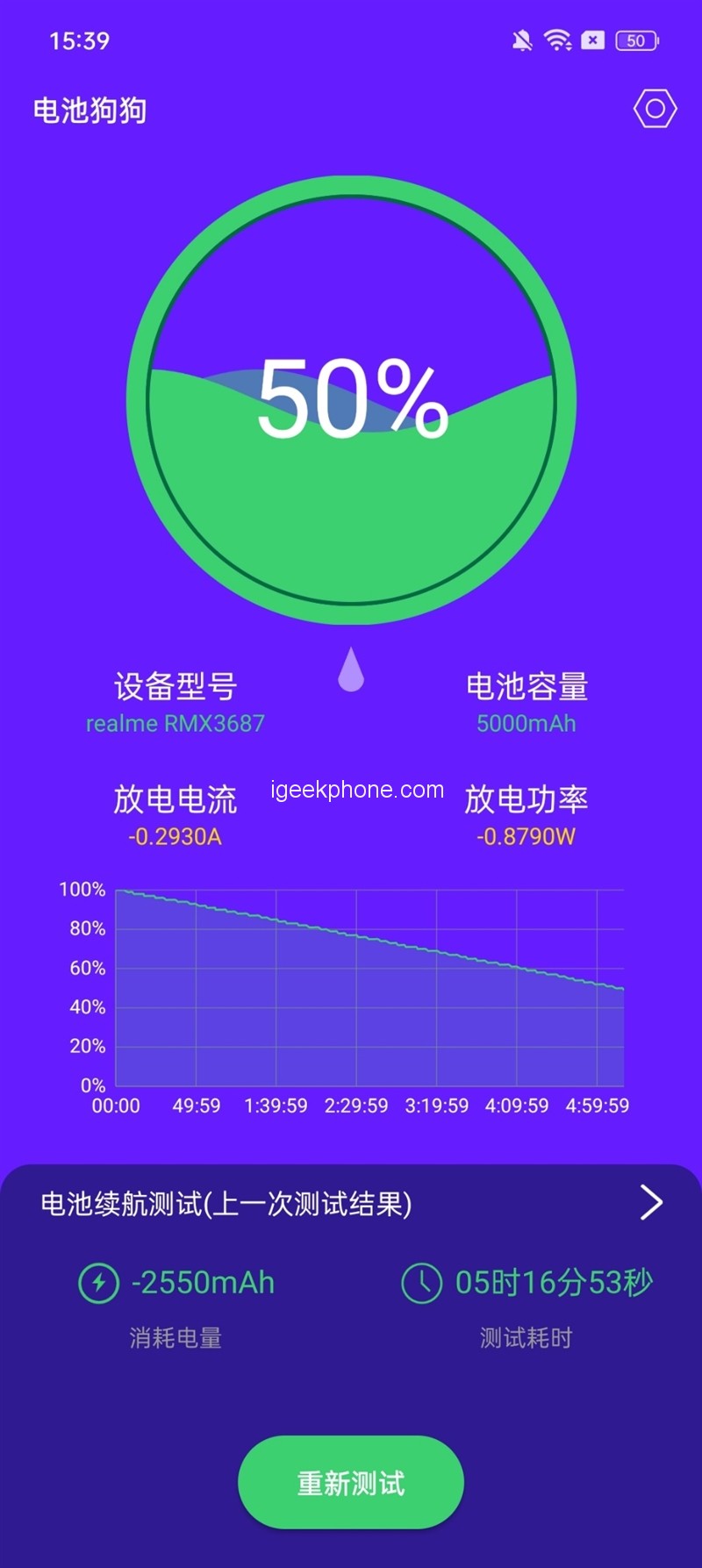
For the battery life test, we use a professional battery life test tool – the battery dog produced by Kuai Technology. We chose the extreme power battery life test for test items. We checked all the test items, including CPU high voltage, CPU multi-threading, AI recognition, picture browsing, video playback, and web browsing, to simulate user usage scenarios and restore the whole load to the greatest extent. Infinitely close to the real power consumption.
We used the battery dog to test the battery life of Realme 10 Pro+. We adjusted the phone’s brightness to 50% and turned off the automatic brightness. The refresh rate defaults to smart switching. We measured it from 100% to 50% and ran for 5 hours and 16 minutes. After conversion, the full battery life can reach nearly 10 hours, which is not a problem to meet a day’s use, and even lasts longer than most mobile phones equipped with 5000mAh batteries.
Read Also: Realme 10 Pro+ Screen: Adopts New Pixel Arrangement Technology
Verdict
Realme has been making cost-effective models. From the launch of the Dimensity 8100 chip to the launch of the 150W speed of light, we have seen Realme’s efforts in all aspects of mobile phones.
This time, Zhenwo brought the digital series back to China for the first time, which also confirmed that Zhenwo would create a distinctive mid-range mobile phone with ultra-high frequency PWM dimming, front and rear golden curvature hyperbolic screens, and 100 Megapixels ultra-clear Camera, so that mid-range mobile phones no longer have shortcomings in terms of screen and video.
After a period of experience, we have made the following summary of Realme 10 Pro+:
1. 2160Hz high-frequency dimming night display quality surpasses the flagship machine
Realme 10 Pro+ has a 2160Hz high-frequency PWM dimming far surpasses the flagship Realme’s first OLED screen with the highest PWM frequency. Because of the high-frequency dimming, it can not only ensure accurate colors in dark light but also solve the problem of high-frequency dimming. Low brightness strobe problem.
At the same time, Realme 10 Pro+ has also become the industry’s first flicker-free OLED screen mobile phone, effectively reducing the visual fatigue caused by screen flicker to users and improving eye comfort during use.
2. The 61-degree golden curvature 173g thin and light body reaches the best balance point
Realme 10 Pro+ is also not stingy in screen quality. The front and rear hyperboloid screens + 61-degree golden curvature instantly improve the whole machine’s texture and make the phone thickness reach 7.78mm.
In the new flagship COP Ultra packaging process, the chin of the phone is controlled at 2.33mm, which is also the narrowest chin of the phone so far. It achieves the effect of no frame visually and obtains the texture of the flagship phone.
Equipped with a 5000mAh large-capacity battery, the weight of the whole machine is only 173g. The mobile phone has a light and light feeling, which makes the grip reach the best balance point, which is especially obvious when playing games or recording videos.
3. The 100-megapixel camera zooms in and is clear
It is not uncommon to have a 100-megapixel camera, but getting a 1/1.67-inch outsole with 100-megapixel in the 2,000 yuan range is rare.
The Samsung HM6 sensor is equipped with Realme 10 Pro+ in the default mode, the proofs presented are of high purity, and the color is full. Thanks to the 3X Ultra Zoom technology, the phone supports 3X zoom, and the cropped picture is also perfect. It can achieve output close to lossless image quality.
On the whole, Realme 10 Pro+ is a mid-range mobile phone, but it has a screen quality that far exceeds that of flagship phones. The front and rear hyperbolic screens + COP Ultra packaging technology make the appearance and texture of mid-range phones more like flagship phones. The blessing of the pixel outsole camera also makes the Realme 10 Pro+ stand out among products in the same price range.
Do not forget to follow us on our Facebook group and page to keep you always aware of the latest advances, News, Updates, review, and giveaway on smartphones, tablets, gadgets, and more from the future technology world.

.jpg)








